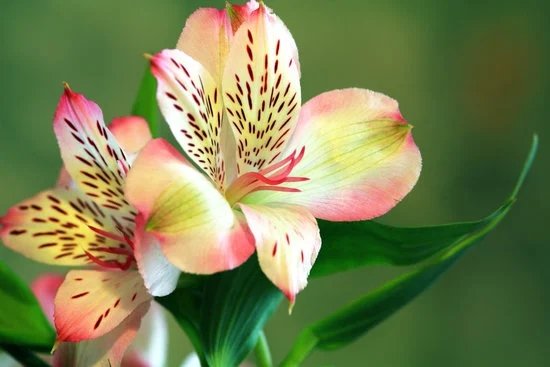Thinking of starting your own indoor vegetable garden? Whether you have limited outdoor space or simply enjoy the convenience of having fresh produce right at your fingertips, indoor vegetable gardening can be a rewarding and practical endeavor. In this article, we will explore the various aspects of indoor vegetable gardening, from choosing the right vegetables to maximizing space and troubleshooting common issues.
When it comes to indoor vegetable gardening ideas, there are numerous options and considerations to take into account. From the benefits of growing your own produce indoors to the best practices for caring for your plants, we will cover everything you need to know to get started on your indoor garden journey.
First, we will delve into the advantages of indoor vegetable gardening and why it has become increasingly popular among urban dwellers and gardening enthusiasts alike. Then, we will discuss how to select the right vegetables for indoor cultivation, explore container options for gardening indoors, and provide tips for caring for your vegetable plants.
Additionally, we will offer creative ideas for maximizing space in your home and troubleshooting common issues that may arise. So whether you’re a seasoned gardener or just starting out, this article is packed with inspiration and guidance for successful indoor vegetable gardening.
Benefits of Indoor Vegetable Gardening
Indoor vegetable gardening offers a wide range of benefits that make it an attractive option for those who may not have access to outdoor space or live in areas with limited growing seasons. By bringing the garden inside, individuals can enjoy fresh, homegrown vegetables year-round.
Health Benefits
One of the main advantages of indoor vegetable gardening is the ability to grow and consume fresh, organic produce right at home. This ensures that you know exactly what has gone into your food, avoiding harmful pesticides and chemicals often found in store-bought produce. Additionally, having easy access to a variety of vegetables can encourage a healthier diet, leading to improved overall wellness.
Environmental Impact
By growing your own vegetables indoors, you can significantly reduce your carbon footprint. Indoor gardening eliminates the need for transportation and packaging associated with store-bought produce, thereby lowering greenhouse gas emissions. Furthermore, cultivating vegetables at home reduces the demand for commercially grown crops that often contribute to deforestation and other harmful environmental practices.
Aesthetic and Therapeutic Value
In addition to its practical benefits, indoor vegetable gardening can also serve as a decorative element in any living space. Plants bring life and color into the home environment and can contribute to an overall sense of well-being. The act of caring for plants has been shown to reduce stress levels and improve mental health, making indoor gardening a rewarding and therapeutic hobby.
Choosing the Right Vegetables to Grow Indoors
When it comes to indoor vegetable gardening ideas, one of the most important steps is choosing the right vegetables to grow indoors. Not all vegetables thrive in an indoor environment, so it’s crucial to select varieties that are well-suited for indoor growing. In this section, we will explore some of the best vegetables to grow indoors and provide tips for successful cultivation.
Best Vegetables for Indoor Gardening
Some of the best vegetables for indoor gardening include herbs such as basil, cilantro, and parsley, which can easily be grown on a sunny windowsill or under artificial lighting. Leafy greens like lettuce, spinach, and kale are also well-suited for indoor cultivation. Additionally, compact root vegetables such as radishes and carrots can be grown in deep containers with loose soil.
Factors to Consider
When choosing vegetables for indoor gardening, it’s important to consider the amount of space available, as well as the specific growing conditions in your home. Some plants may require more light or warmth than others, so be sure to take these factors into account when making your selections. It’s also a good idea to choose vegetables that you enjoy eating and that are practical for your cooking needs.
Tips for Success
To ensure success with your indoor vegetable garden, start with easy-to-grow varieties that are relatively low-maintenance. Consider starting with just a few different types of vegetables until you gain confidence and experience with indoor gardening. And always follow recommended planting depths and spacing requirements to promote healthy growth and prevent overcrowding.
By carefully selecting the right vegetables for your indoor garden and providing them with proper care, you can enjoy a bountiful harvest of fresh produce right in your own home.
Container Options for Indoor Gardening
When it comes to indoor vegetable gardening, choosing the right containers is essential for the success of your plants. Here are some container options to consider for your indoor garden:
- Traditional pots and planters: These are the most common containers used for indoor gardening. They come in a variety of sizes and materials, such as clay, ceramic, plastic, or metal. Make sure the pots have drainage holes to prevent waterlogged soil.
- Window boxes: If you have limited space, window boxes can be a great option for growing herbs and small vegetables indoors. They can be mounted on windowsills or other sunny spots in your home.
- Hanging baskets: Hanging baskets are a creative way to add greenery to your home while saving space. They work well for trailing plants like cherry tomatoes or strawberries.
In addition to traditional containers, there are also specialized options designed specifically for indoor vegetable gardening:
- Self-watering containers: These containers have built-in reservoirs that provide a constant water supply to the plants, making them a great option for busy individuals or those new to gardening.
- Grow bags: These lightweight and portable bags are excellent for growing root vegetables like carrots and potatoes indoors. They offer good drainage and aeration for the plants’ roots.
When choosing containers for your indoor vegetable garden, make sure they are the right size for your plants’ root systems and provide adequate drainage to prevent overwatering. With the right container options, you can create a thriving indoor garden in even the smallest of spaces.
Best Practices for Indoor Vegetable Gardening
When it comes to indoor vegetable gardening ideas, there are several best practices that can help you maximize your success. One of the most important factors to consider is providing the right amount of light for your plants. Most vegetables require at least 6 hours of sunlight per day, so be sure to place your indoor garden in a location with ample natural light or invest in grow lights.
Another best practice for indoor vegetable gardening is choosing the right containers for your plants. Ensure that your containers have drainage holes to prevent waterlogged soil, and consider the size of the container based on the mature size of the vegetable plant. Additionally, using a high-quality potting mix specifically designed for container gardening can provide essential nutrients and promote healthy root growth.
Watering is another crucial aspect of indoor vegetable gardening. Overwatering can lead to root rot, while underwatering can cause stress and stunted growth in plants. Be sure to check the moisture level of the soil regularly and adjust your watering schedule based on the specific needs of each vegetable variety.
| Practice | Description |
|---|---|
| Provide Adequate Light | Ensure that your plants receive at least 6 hours of sunlight per day or supplement with grow lights. |
| Select Suitable Containers | Choose containers with drainage holes and appropriate sizes based on plant maturity. |
| Water Carefully | Regularly check soil moisture levels and adjust watering as needed to prevent overwatering or underwatering. |
By following these best practices, you can create an optimal environment for your indoor vegetable garden and increase your chances of a successful harvest.
Creative Ways to Maximize Space for Indoor Gardening
When it comes to indoor vegetable gardening ideas, space can often be a limiting factor. However, there are several creative ways to maximize the space you have available for your indoor garden. One option is to utilize vertical gardening techniques, such as installing shelves or hanging planters to make use of wall space. This allows you to grow a larger quantity of vegetables without taking up valuable floor space in your home.
Another way to maximize space for indoor gardening is by choosing compact or dwarf varieties of vegetables that are well-suited for growing in containers. These smaller plants can be grown in smaller pots, allowing you to fit more plants into a limited area. Additionally, using stacking or tiered planters can help make the most of vertical space and provide room for multiple plants in a small footprint.
In addition to utilizing vertical and compact gardening techniques, you can also get creative with your plant placement. Consider using windowsills, countertops, and other areas that receive ample sunlight for growing vegetables.
Hanging baskets and wall-mounted planters can also be used in unconventional spaces, such as above kitchen sinks or on balcony railings, to further expand your indoor vegetable garden. By thinking outside the box and finding unique spaces within your home, you can effectively maximize the growing area for your indoor vegetable garden.
Tips for Caring for Indoor Vegetable Plants
Caring for indoor vegetable plants is essential to ensure a successful and fruitful harvest. Here are some tips to help you care for your indoor vegetable plants:
1. Watering: Proper watering is crucial for the health of indoor vegetable plants. Make sure to water them regularly, but be careful not to overwater. The frequency of watering will depend on the specific needs of each plant, so be sure to research the watering requirements of the vegetables you are growing.
2. Sunlight: While indoor vegetable gardening allows you to control the environment, it’s essential to provide your plants with adequate sunlight. Place your containers near a south-facing window where they can receive at least 6-8 hours of sunlight per day. If natural light is insufficient, consider using artificial grow lights.
3. Temperature and Humidity: Indoor vegetable plants thrive in a stable environment with consistent temperatures and adequate humidity levels. Keep your indoor garden at an average room temperature of around 65-75°F (18-24°C) and maintain humidity levels between 40-60%. You can use a humidifier or pebble trays filled with water to increase humidity if needed.
4. Soil and Fertilization: Use high-quality potting mix specifically formulated for container gardening when planting indoor vegetables. Additionally, provide your plants with balanced fertilizer according to their specific needs during their growth stages.
5. Pest Control: Regularly inspect your indoor garden for signs of pests such as aphids, spider mites, or whiteflies. Remove any affected leaves or use organic pest control methods like neem oil or insecticidal soap to keep pests at bay.
By following these tips for caring for indoor vegetable plants, you can ensure that your indoor garden thrives and yields a bountiful harvest of delicious home-grown produce.
Troubleshooting Common Issues in Indoor Vegetable Gardening
Indoor vegetable gardening can be a rewarding and fruitful endeavor, but it also comes with its fair share of challenges. From pest infestations to nutrient deficiencies, there are several common issues that indoor gardeners may encounter. However, with the right knowledge and proactive measures, these issues can be effectively addressed.
One of the most common problems in indoor vegetable gardening is pest infestations. Insects such as aphids, spider mites, and whiteflies can wreak havoc on indoor plants if left unchecked. To combat this issue, it is important to regularly inspect plants for any signs of pests and take immediate action if an infestation is detected. This can include using natural remedies like neem oil or introducing beneficial insects such as ladybugs to the indoor garden.
Another issue that indoor vegetable gardeners may face is nutrient deficiencies in their plants. Since container-grown vegetables rely on potting soil for their nutrients, it is crucial to ensure that the soil is enriched with the necessary elements for healthy plant growth. A balanced fertilizer specifically formulated for vegetable plants can help address this problem and promote optimal growth and productivity.
In addition to pests and nutrient deficiencies, inadequate light exposure is another common issue in indoor vegetable gardening. Insufficient light can lead to stunted growth and poor fruit development in plants. To overcome this challenge, implementing supplemental lighting with grow lights can provide the necessary light spectrum for plant photosynthesis and overall health. By addressing these common issues proactively, indoor vegetable gardeners can maintain thriving and bountiful crops throughout the year.
By being aware of potential pitfalls and taking preventative measures, indoor gardeners can cultivate a successful harvest while reaping the many benefits of growing vegetables indoors.
Conclusion
In conclusion, indoor vegetable gardening offers a myriad of benefits and rewards for those who are willing to put in the time and effort. Not only does it provide a convenient and sustainable way to access fresh produce year-round, but it also allows for greater control over the growing environment, leading to healthier and more flavorful vegetables. Additionally, indoor vegetable gardening can be a therapeutic and satisfying hobby that brings joy and a sense of accomplishment.
By carefully selecting the right vegetables to grow indoors, choosing suitable containers, implementing best practices, and maximizing space creatively, individuals can successfully cultivate a thriving indoor garden. From herbs and leafy greens to root vegetables and even small fruits, there is a wide variety of options to explore when it comes to indoor vegetable gardening. With proper care and attention, these plants can flourish even in limited spaces.
While there may be challenges along the way, such as troubleshooting common issues or ensuring proper care for the plants, the rewards far outweigh any difficulties. The satisfaction of harvesting homegrown produce from your own living space is unparalleled. Ultimately, indoor vegetable gardening not only provides an opportunity for self-sufficiency but also promotes a healthier lifestyle and greater appreciation for nature’s bounty. So why not start exploring some indoor vegetable gardening ideas today?
Frequently Asked Questions
What Vegetables Can I Grow Inside the House?
There are several vegetables that can be grown inside the house, including cherry tomatoes, bell peppers, lettuce, carrots, and herbs like basil and parsley. These typically require a sunny spot and proper care to thrive indoors.
Is an Indoor Vegetable Garden Worth It?
An indoor vegetable garden can be worth it for many people, especially if they have limited outdoor space or live in a climate with harsh winters. Growing your own vegetables can save money, provide fresh produce year-round, and offer the satisfaction of growing your own food.
How Do I Start an Indoor Vegetable Garden?
To start an indoor vegetable garden, begin by choosing the right location with plenty of sunlight and good air circulation. Select appropriate containers with drainage holes and quality potting soil.
Then, choose vegetables that are suitable for indoor growing and provide them with the right amount of water and nutrients. Regular monitoring for pests and diseases is also crucial for success.

Welcome to my gardening blog! I am passionate about plants and enjoy sharing my knowledge and experiences with others. In this blog, I will write about everything related to gardening, from tips on how to get started to updates on my own garden projects.





